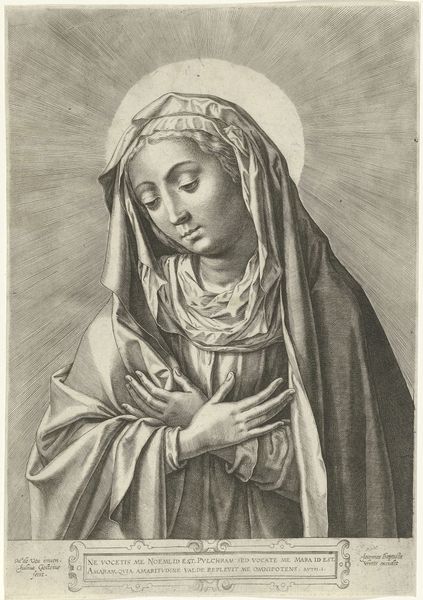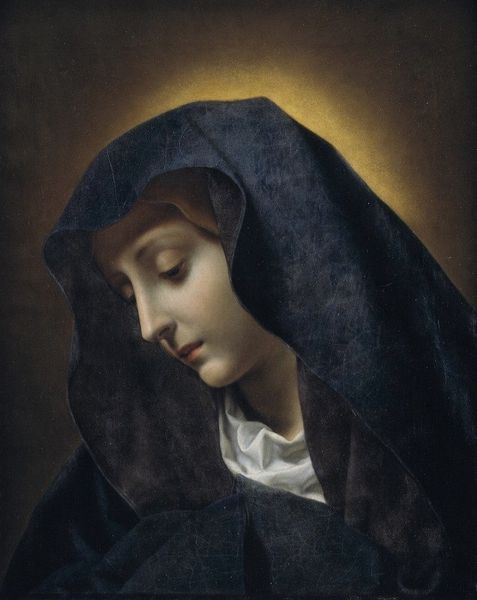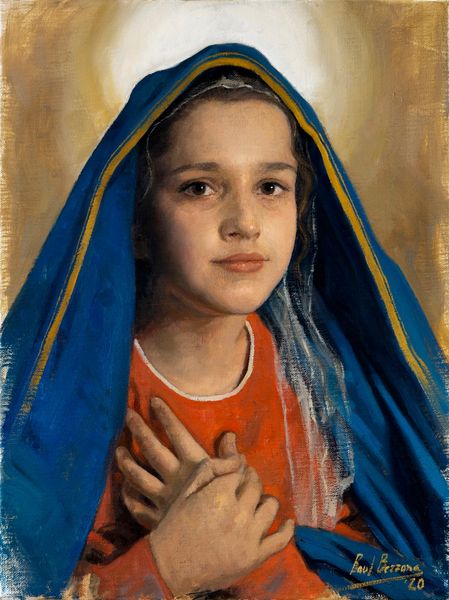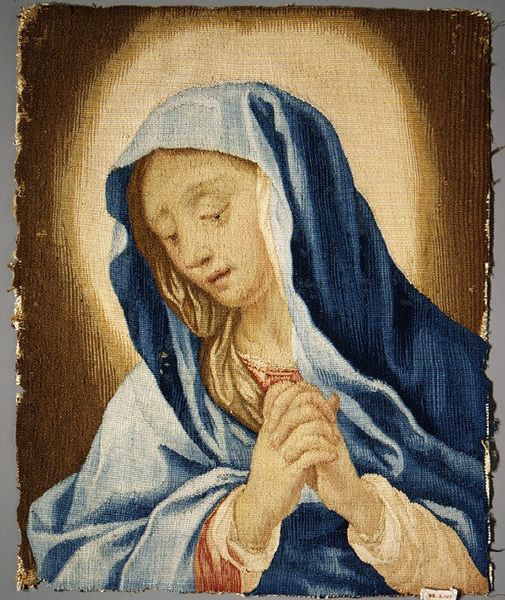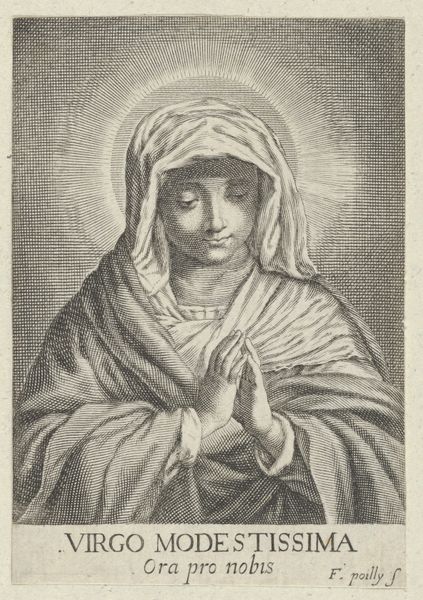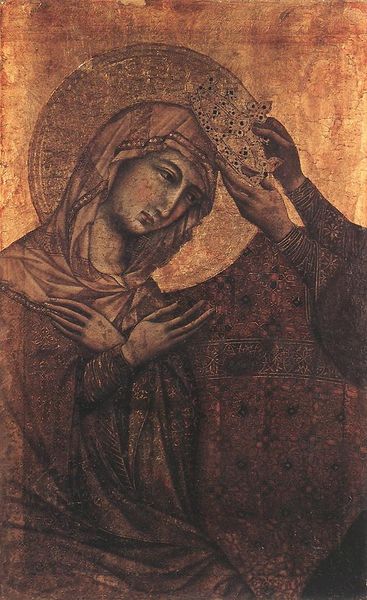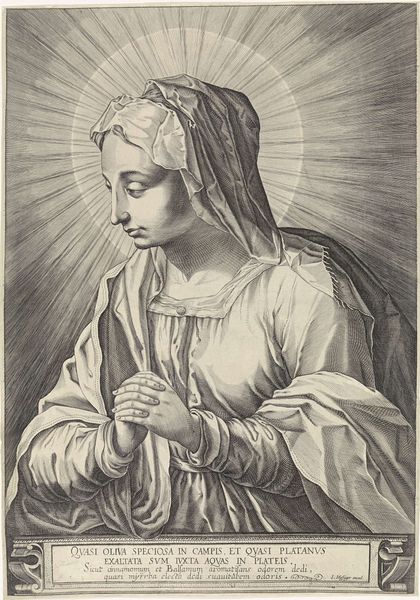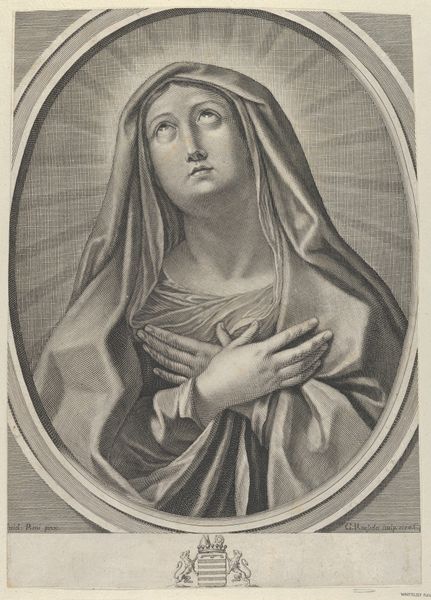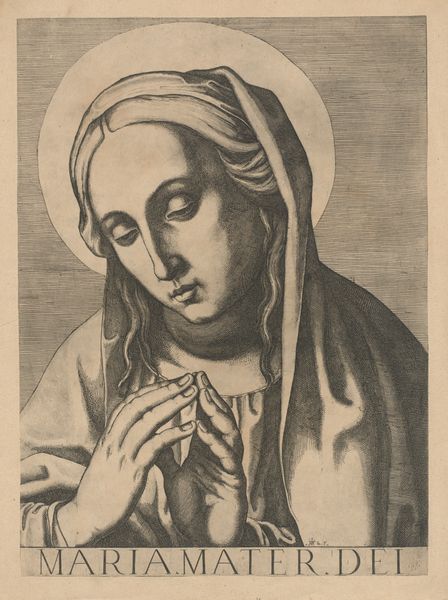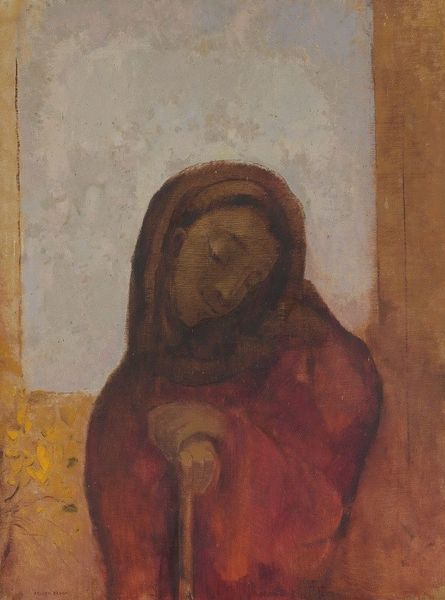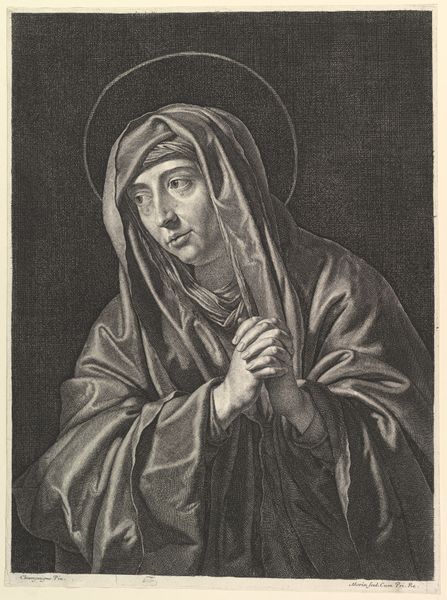
drawing, pastel
#
portrait
#
drawing
#
medieval
#
oil painting
#
portrait reference
#
portrait drawing
#
pastel
#
portrait art
Copyright: Public Domain: Artvee
Editor: So here we have Jozef Hanula’s "Virgin Mary" from 1944. It looks like a drawing, maybe pastel, and the mood is very serene, almost melancholic. The colors feel muted, but still vivid. What is your interpretation of this work, especially considering when it was made? Curator: Well, context is crucial. Hanula created this piece in 1944, a year laden with the burdens of war. Considering this, how does the traditional imagery of the Virgin Mary, normally a symbol of hope, speak to a world engulfed in conflict? It seems hearkening back to medieval styles; notice the simplified forms, almost iconic in their presentation. It begs the question: what specific traditions are informing his work? Editor: It's interesting you mention the weight of the war. I didn't immediately think of that, but now I see a sense of longing or hope *amidst* something terrible, perhaps reflected in the subdued colors and the slightly downcast eyes. Do you think the revival of these medieval elements was also a deliberate choice relating to social upheaval? Curator: Precisely! Art doesn’t exist in a vacuum. Think about what 'Medieval' meant to different nationalisms throughout Europe. Hanula wasn't just making art; he was making a statement that may have also carried with it subtle messages of national or cultural identity during that turbulent period. Also, note the conscious stylization—the flattening of space, the emphasis on line. What sociopolitical implications could it carry to reference past movements in art in the 1940's? Editor: Wow, I had never considered that the 'Medieval' tag had broader associations, beyond style alone, and how those references could become loaded political statements depending on context. Thanks! Curator: It is rewarding to peel back layers and examine art as a product and mirror of specific socio-historical forces.
Comments
No comments
Be the first to comment and join the conversation on the ultimate creative platform.

